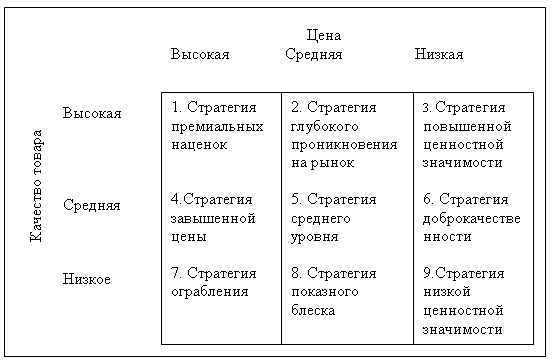home
 Marketing Marketing
 Basics of Marketing - Kotler Philip Basics of Marketing - Kotler Philip
|
Basics of Marketing - Kotler Philip
Approaches to the problem of pricing
The firm establishes the initial price, and then adjusts it taking into account various factors acting in the environment. We will consider the following approaches to the problem of pricing: setting prices for a new product, pricing within a commodity nomenclature, setting prices on a geographic basis, setting prices with discounts and credits, setting prices to stimulate sales and setting discriminatory prices.
Setting prices for a new product
The company's strategic approach to the problem of pricing depends in part on the stages of the product's life cycle. Particularly great demands are made by the stage of bringing to the market. It is possible to distinguish between setting a price for a genuine novelty protected by a patent and setting a price for a product that imitates existing ones.
SETTING PRICE FOR THE AUTHENTIC NEW The firm that launches a patent-protected novelty on the market can choose either a "cream-skimming" strategy or a strategy for a lasting introduction to the market when setting the price for it .
The strategy of "skimming." Many companies that created patented novelties initially set high prices on them to "remove the cream" from the market. The practice of "skimming cream" is often used by the DuPont corporation. On their new inventions - cellophane, nylon, etc. - it sets the highest prices that you can ask for. "DuPont" assigns a price at which new material is perceived only by certain segments of the market. After the initial wave of sales slows down, the corporation reduces the price to attract the next echelon of customers, who are satisfied with the new price. In this way, DuPont removes the maximum possible financial "cream" from a wide variety of market segments. Polaroiid also resorts to this practice. First, it releases an expensive version of the camera, and then begins to gradually attract all new market segments, offering simplified models at lower prices.
The use of the "cream removal" method from the market makes sense under the following conditions: 1) there is a high level of current demand from a sufficiently large number of buyers; 2) the costs of small-scale production are not so high as to negate the company's financial benefits; 3) a high initial price will not attract new competitors; 4) high price supports the image of high quality goods.
Strategy for a lasting introduction to the market. Other companies, on the contrary, set a relatively low price for their novelty in the hope of attracting a large number of buyers and winning a large market share. The strategy of strong introduction on the market is often used by the corporation "Texas tools". It usually builds a large factory, sets the commodity to the lowest possible price, conquers a larger market share, reduces production costs and, as they reduce, continues to gradually reduce the price.
The following conditions favor the establishment of a low price1: 1) the market is very price sensitive, and the low price contributes to its expansion; 2) with the growth of production volumes, its costs, as well as costs for the distribution of goods are reduced; 3) low price is unattractive for existing and potential competitors.
PRICE FOR A NEW IMITATOR PRODUCT . The firm, planning to develop a new product-simulator, faces the problem of its positioning. It must decide on the positioning of the novelty in terms of quality and price. In Fig. 65 presents nine variants of the strategy of possible qualitative-price positioning. If the existing market leader occupies position No. 1, i.e. Produces a product with a premium mark-up and sells it at the highest possible price, a beginner company may prefer one of the other strategies. It can create a high-quality product and assign an average price (item No. 2) to it, can create an average quality product and charge an average price for it (item No. 5), etc. A novice company should examine the size and growth rates of the market for each of the nine chart positions and specific competitors within each of them.

Fig. 65. Nine variants of the marketing strategy for the price and quality indicators


Comments
When commenting on, remember that the content and tone of your message can hurt the feelings of real people, show respect and tolerance to your interlocutors even if you do not share their opinion, your behavior in the conditions of freedom of expression and anonymity provided by the Internet, changes Not only virtual, but also the real world. All comments are hidden from the index, spam is controlled.